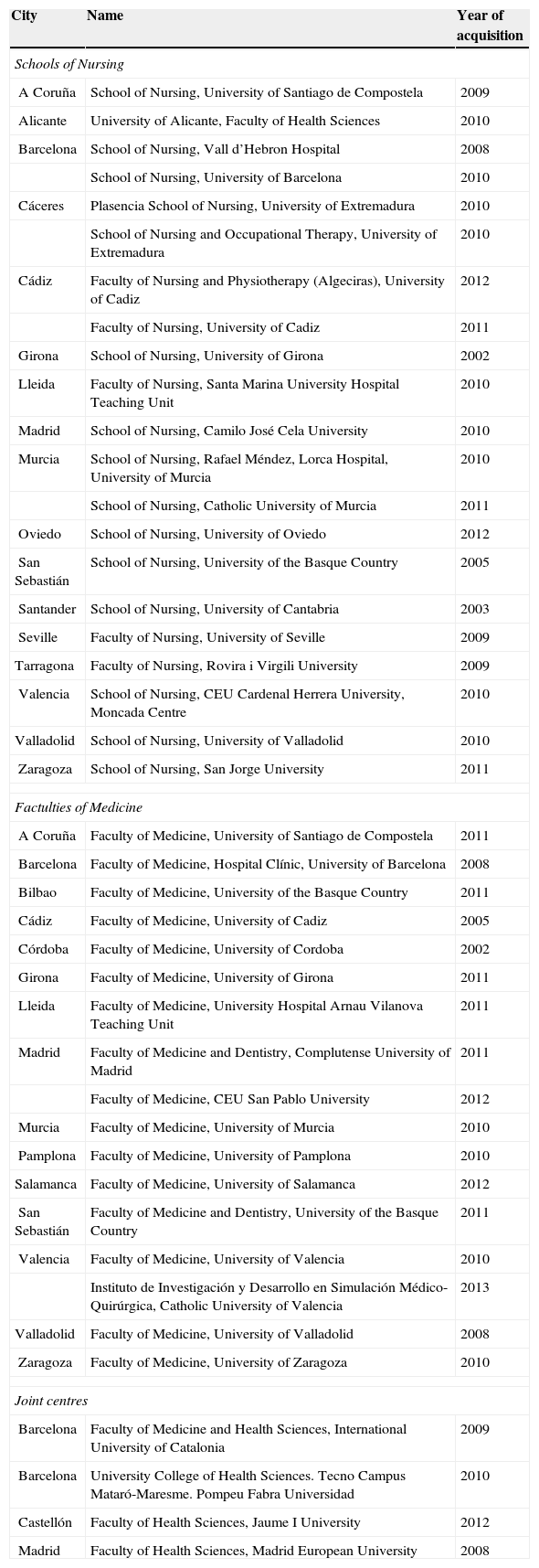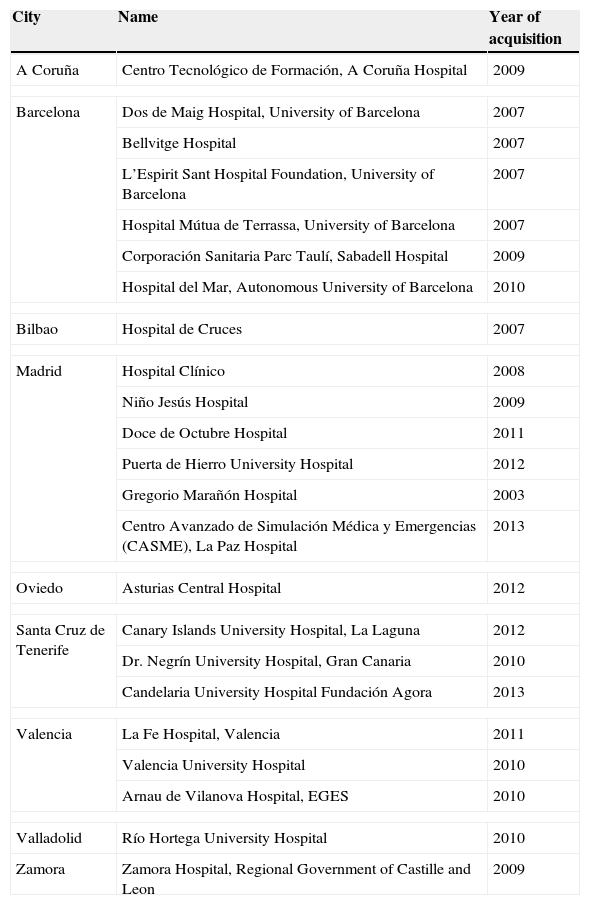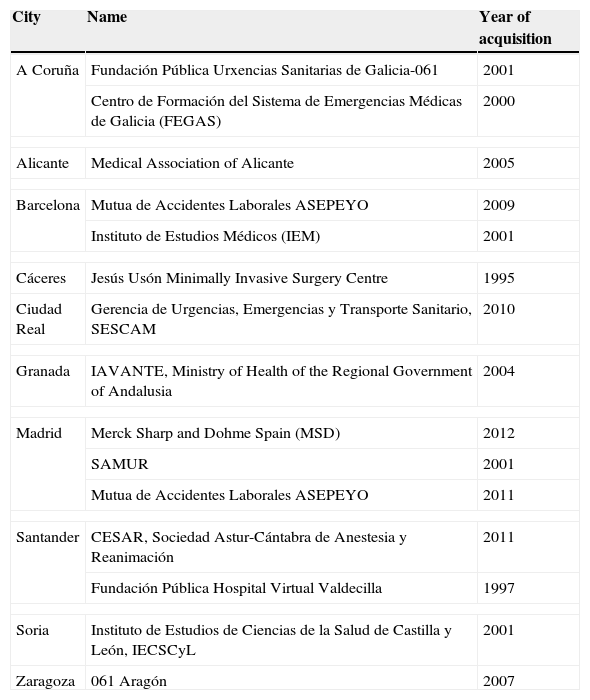Clinical simulation has emerged as a powerful new tool for the learning and assessment of different skills and attitudes in patient care, by using innovative technology such as high fidelity simulators (HFS).
ObjectiveTo describe the current state of high fidelity clinical simulation in Spain and its principal characteristics.
MethodsDescriptive observational study that analyzes information on the clinical centres that have HFS in our country.
ResultsThere are currently a total of 80 centres with HFS in our country, mainly distributed in university centres (43), hospital and emergency centres (27), simulation centres and institutes of simulation (5), and the rest (5) associated to entities of diverse ownership. The temporal development of HFS has been slowly progressive, with a significant growth in the last 6 years. The majority (74%) have specific facilities, auxiliary equipment (60%), and professionals with a shared commitment (80%). It is already integrated into the training programmes in 56% of university centres with HFS.
ConclusionsThe development of HFS has been remarkable in our country, and is mainly related to university undergraduate and postgraduate clinical medical education. It would be useful to design a network of simulation training centres of Health Sciences in Spain, which would be operational, sustainable and recognised, to optimise the use of these facilities.
La simulación clínica ha surgido como una potente herramienta para el aprendizaje y evaluación de las diferentes capacidades y actitudes en el ámbito de las Ciencias de la Salud, mediante el uso de tecnologías innovadoras, como los simuladores de alta fidelidad (HFS).
ObjetivoDescribir el estado actual de la dotación de equipos de simulación clínica de alta fidelidad en nuestro país e identificar sus características principales.
MétodoEstudio observacional descriptivo que analiza la información sobre los centros que poseen HSF en nuestro país.
ResultadosExisten actualmente un total de 80 centros dotados de HFS en nuestro país, distribuidos principalmente en centros universitarios (43), centros hospitalarios y de urgencias (27), e institutos o centros de simulación (5), estando el resto (5) asociado a entidades de diversa titularidad. El desarrollo temporal de los HFS ha sido lentamente progresivo, experimentando un importante crecimiento en el último sexenio. En su mayoría (74%) cuentan con instalaciones específicas, equipos auxiliares (60%) y profesionales con dedicación compartida (80%). Está integrada ya en los programas de formación del 56% de los centros universitarios dotados de HFS.
ConclusionesDisponemos actualmente de un notable desarrollo de HFS en nuestro país, principalmente relacionados con la docencia médica pregrado universitaria y posgrado hospitalaria. Sería de utilidad diseñar una red de centros de formación en simulación de Ciencias de la Salud en España, que sea operativa, sostenible y reconocida, que permita optimizar la utilización de estos centros.













